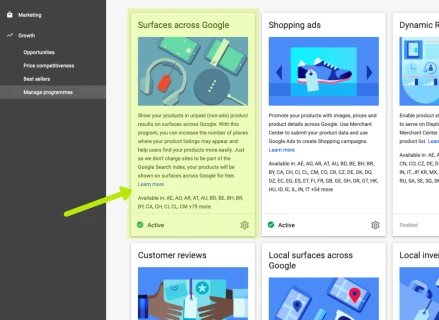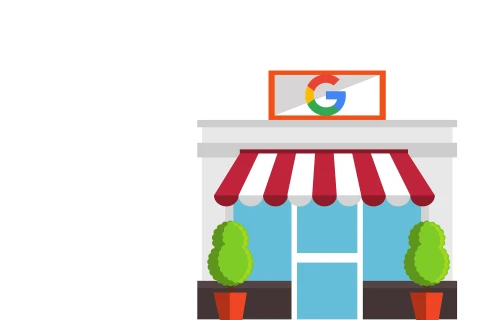Google Announce FREE Product Listings On Google Shopping
—I was very interested to hear the news this week that Google are going to start showing free product listings in search results. Up until now, product listings have always been reserved for paying advertisers as part of the Google Shopping program. But just like we see the free (organic) web listings on the main search results, this news suggests we’ll start to see something similar over on the Shopping tab. Exactly how and where Google will incorporate these free listings into search results remains to be seen, but it sounds like it could open up new potential opportunities for non-paying retailers to attract visitors and sales to their online stores.
What exactly have Google announced?
Earlier this week, Google announced via their blog that in light of the challenges retailers face with high-street closures and consumers increasingly shopping online, they’re wanting to support businesses who might not have the money to put their products out in front of people by allowing them to sell on Google for free.
Google’s president of Commerce, Bill Ready, explained:
"Beginning next week, search results on the Google Shopping tab will consist primarily of free listings, helping merchants better connect with consumers, regardless of whether they advertise on Google.With hundreds of millions of shopping searches on Google each day, we know that many retailers have the items people need in stock and ready to ship, but are less discoverable online."
Bill went on to explain they’ll start to include free product listings in search results in the U.S. to begin with, and then roll this out internationally shortly after.
As a digital marketing agency that works with Google Shopping and paid search advertising, I’ve so many questions wandering around my head. What will the free listings look like? Will they highlight paid listings like they do on the main search page? How will they decide which products to list first? How does this affect paid advertisers?
And more interestingly, is this the start of something much bigger for product-based Google search? Will we ever see the day when the main search results are full of product listings rather than the usual text based listings we’ve become so familiar with? I predict we will.
At the same time, Google also announced a new partnership with PayPal to allow merchants to link their accounts and speed up the onboarding process of getting their products listed in search results. Google and PayPal have been partnered for some time but how this will affect Google Shopping remains to be seen... could we see a future where consumers actually make a purchase right within the Google Shopping tab?
What’s in it for retailers?
Quite simply, online retailers will benefit from free exposure on Google with the prospect of attracting visitors and sales to their site. And given the millions of product-based searches on Google every day, why wouldn’t you not want to be included and miss out on potential sales? You’ve really nothing to lose. Whether you’re selling clothing, household goods or office supplies, it’s definitely going to be worth making your products eligible for Google to show in search results - especially given that they’ve said the Shopping tab will mostly be made up of ‘free’ listings.
On a more technical level for the marketers amongst us, it also begs the question; How will Google’s algorithm decide which retailers’ products to list and where? Are we about to see the start of a new type of search engine optimisation (SEO) for products, as is already the case currently with the Google Shopping advertising program whereby the better optimised your product data, the better chance of having your products listed in the most prominent positions. Whatever the why’s, if’s and where’s, the message right now is if you’re selling products online then go ahead and get listed on Google for free.
For those retailers who are already engaging in paid advertising to have their products listed on Google, there’s also some good news. Google have confirmed that to supplement your paid listings, your products will also be eligible to appear for free on the Google Shopping tab. I wouldn’t be turning off your ad campaigns just yet though, or even consider it for that matter, as we need to be clear exactly what the differences are between paid and free listings. The main difference is that paid shopping ads (known as Product Listing Ads or PLAs) are shown on the main Google search page where people generally start their search, whereas free listings will be displayed on the separate Google Shopping tab (at least for now). PLAs also have the added benefit being shown across Google’s search partner websites as well as the Google Display Network including Youtube, Gmail and Google Discover. That’s quite a lot of difference between the two, and so it’ll be interesting in time to see how the performance of the two compare.
What’s in it for shoppers?
When people search for products to buy online, you can bet the lions share of those searches happen on Google or Amazon, or both. The fact is they both dominate the market when it comes to product-based search, and so it makes sense they both want to provide the best experience they can for shoppers to keep them coming back and using their platforms.
Google’s introduction of free listings mean a larger range of products from more stores for consumers to choose from. And if shoppers find great products on offer, they’ll use Google Shopping again and keep coming back for all their product needs - makes sense right?
What’s in it for Google?
If Google can offer more choice to shoppers by displaying free listings from a wider range of retailers who are going to get more sales, then it’s a win win for both shoppers and retailers. Everyone’s happy. But what about Google, what do they get out of it?
I think the first thing to consider here is Google and Amazon are competitors, both wanting to attract new sellers and shoppers using their platforms. There’s a real fight for dominance of the shopping marketplace experience. In 2015, Google had 54% share of product searches and Amazon had 46%, but by 2018 these figures had reversed. And that’s not good for Google, because it means Amazon is also eating into Google’s advertising revenue, with retailers choosing to re-allocate their advertising budgets to where most people are looking to buy.
So Google’s got a job on their hands to try claw back some of Amazon’s search volume for product-based searches, and as a result increase their advertising spend share from online retailers wanting to display their products more prominently in search results. This latest move by Google to display free product listings organically in search requires retailers to have a Merchant Center account with an uploaded feed of all your product data - and in doing so you’re already half way there to being a fully fledged advertiser. Perhaps it’ll only be a matter of time before you’re wanting to be listed on the main Google search page - which I can confirm does generate great sales return for our clients.
How to get your products on Google Shopping for free
As of Tuesday 5th May 2020, Google are now inviting businesses to opt-in to free product listings and here's how you can be included:
If you’re already an existing user of Google Merchant Center, then you need to opt into the surfaces across Google program. To opt in, select “Growth” and then “Manage programs” in the left menu and select the “surfaces across Google” card. Your products will then be eligible to serve as free listings in the Google Shopping tab. This won’t affecting any existing paid ad campaigns.

If you need to register a new Merchant Center account, you can do so at https://merchants.google.com.
There’s a more lengthy process to getting set up, but you can opt into surfaces across Google during sign up. Remember you’ll also need to create and upload your product feed for Google to use to display listings on Google Shopping. This can be done either by creating an XML feed from your website, or by manually populating a Google Sheet. Google have announced, however, that they’re working on a more streamlined process to getting everything set up.
Need help?
If you need any help setting up your Merchant Center account, feel free to reach out to us and we’ll be delighted to assist you.
Drop us an email


